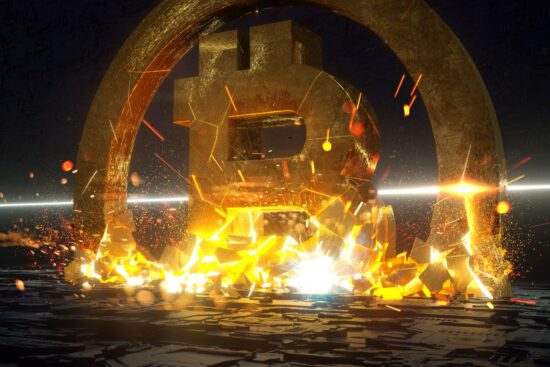
BRC 20, BEP 20, and ERC 20 are some of the best token standards in the blockchain industry. Their significance lies in promoting consistency and reliability in blockchain transactions, fostering innovation, and facilitating a broader adoption of blockchain technology across diverse applications. In today’s blog post, we’ll unravel the key differences and similarities between these three prominent token standards (BRC 20, BEP 20 and ERC 20). Without further ado, jump into reading this.
Before starting anything else, let’s understand what token standards are.
What are Token Standards?
By reading the first line, you might have thought, what are these token standards?
Well, BRC 20, BEP 20, and ERC 20 are token standards. Didn’t understand? Let’s go into detail!
Token standards are popularly known as a subset of smart contract standards. These standards help establish uniformity in how tokens are created, managed, and transferred within a blockchain ecosystem. In simple words, Token standards can be described as,
“Predefined sets of rules and functionalities that tokens on blockchain networks must adhere to in order to ensure compatibility, interoperability, and consistent behavior across different applications, wallets, and exchanges.”
Understand this with an example,
Imagine you want to create a new cryptocurrency token called “ABC Token” on the Ethereum blockchain. Your main aim here will be to ensure ABC Token can be easily managed, traded, and recognized by various wallets and dApps. To do so, you have to follow the ERC-20 token standard. This standard applies various rules and conditions to which your token must adhere to. If not, forget about your dream of creating a new cryptocurrency token on Ethereum.
Token Standards are SUBSET of Smart Contract Standards: Justifying This Famous Statement
As mentioned in the previous section, Token standards are popularly known as a subset of smart contract standards. This is because token standards can only be applied to blockchain platforms that use smart contracts.
[Smart Contracts are self-executing contracts that facilitate hassle-free transactions and recorded history on the blockchain platform. In contrast, smart contract standards are a set of rules that enable the deployment of smart contracts on specific blockchains. The working of smart contract standards is the same as token standards.]
After reading this far, we hope you understand token standards. Let’s proceed to the main topic of the blog post: BRC 20 vs. BEP 20 vs. ERC 20.
BRC 20 vs. BEP 20 vs. ERC 20: When Did They First Appear?
BRC 20
First Appearance: March 2023
Background: The question ‘What is BRC20?’ always makes major waves on the internet. So, here is its answer: BRC 20 is a relatively new token standard. It was specially designed for the Bitcoin blockchain and aims to bring fungible token capabilities to Bitcoin.
BEP 20
First Appearance: September 2020
Background: BEP 20 was first launched when the world was struggling with the COVID-19 pandemic. It is the token standard for Binance Smart Coin (ESC), created by Binance. Like Ethereum’s token standards, like ERC 20, BEP 20 aims to offer a more efficient and scalable environment for token creation and management. It also offers low transaction fees to developers and users.
ERC 20
First Appearance: November 2015
Background: ERC 20, also known as Ethereum Request for Common 20, was proposed by Fabian Vogelsteller and Vitalik Buterin. After a few years of its establishment, it quickly became the most widely adopted token standard on the Ethereum blockchain. Moreover, ERC 20 started the trend of creating fungible tokens. Then, ERC-1155 followed in its footsteps.
BRC 20 vs. BEP 20 vs. ERC 20: Pros & Cons of Each Token Standard
BRC 20
Pros
- User Friendly
- High-security and simple tokenization process
- Diverse user base
- Seamless integration with Bitcoin
Cons
- Relatively high fees
- Low transaction speed
- Complex functionality
- Limited development tools and ecosystem
BEP 20
Pros
- Large number of transactions per second
- Low transaction fees
- Efficient cross-chain transactions
- Wide adoption by many wallets, exchanges, and dApps
Cons
- Centralization concerns as BSC uses a Proof of Staked Authority (PoSA) consensus mechanism
- The ecosystem is still maturing as BSC is a relatively new blockchain
- The high number of scams
- Regulatory concerns
ERC 20
Pros
- Support of a vast number of wallets, exchanges, and decentralized applications (dApps)
- Seamless integration with Ethereum-based dApps
- Robust security and Smart Contract Safety
- Rich developmental environment (wealth of tools, libraries, and documentation)
Cons
- Network congestion
- High transaction fees (gas fees)
- Complex creation and management process
- Frequent target of hacks and exploits
BRC 20 vs. BEP 20 vs. ERC 20: Key Similarities Between Them
BRC 20, BEP 20, and ERC 20 are designed for different blockchain networks. Still, all three share several key similarities.
1. Tokenization Standard
As the very first line of the first section states, ‘BRC 20, BEP 20, and ERC 20 are prominent token standards. All three provide a structured framework of rules that facilitates the creation and management of fungible tokens.
2. Interoperability
All three standards aim to ensure that tokens can interact seamlessly with various wallets, exchanges, and applications.
3. Smart-Contract Based
Remember reading the line, ‘Token Standards are SUBSET of Standard Contract Standards’, in this blog? If so, you might have understood. But let us explain a little.
All token standards are made of different blockchain platforms, which are governed by smart contracts.
4. Fungibility
BRC 20, BEP 20, and ERC 20, all three standards support fungible tokens. This means that each token is interchangeable with another of the same type and value.
5. Adoption and Ecosystem Support
All tokens created by adhering to these standards are widely accepted by numerous wallets, exchanges, and dApps. Moreover, these standards help developers to create and manage tokens effectively.
BRC 20 vs. BEP 20 vs. ERC 20: Key Differences Between Them
BRC 20, BEP 20, and ERC 20 have numerous differences that set them apart. Here are the key differences between these token standards.
1. Underlying Blockchain
Each token standard is made for different blockchain platforms. BRC 20 is specially designed for BRC 20, while BEP 20 is made for Binance Smart Chain (BSC). If we talk of ERC 20, it is designed for Ethereum. Besides this, each token standard has a different consensus mechanism (as given below)
BRC 20: Proof of Work (PoW)
BEP 20: Binance Smart Chain (BSC)
ERC 20: Transitioning from Proof of Work (PoW) to Proof of Stake (PoS) with Ethereum 2.0.
2. Transaction Speed and Fees
BRC 20 has a relatively slow transaction speed due to Bitcoin’s 10-minute time. Unlike BRC 20, BEP 20 has a fast transaction speed with a block time of around 3 seconds. However, ERC 20’s transaction speed is between BRC 20 and BEP 20. This means that ERC 20 has a moderate transaction speed with block times of around 15 seconds.
Transaction fees for each tokenization standard are as follows:
| Token Standards | Transaction Fees |
| BRC 20 | High (especially during periods of network congestion) |
| BEP 20 | Low |
| ERC 20 | High (especially during periods of network congestion) |
3. Ecosystem and Adoption
Since BRC 20 first appeared in 2020 (a relatively new year in the blockchain world), it is less mature and has a lower adoption rate. Meanwhile, BEP 20 has a mature ecosystem and is widely adopted within the Binance ecosystem and other wallets.
ERC 20 is different from both of these. It has a highly mature and established ecosystem. In addition, it is widely adopted by a vast number of wallets, exchanges, and dApps.
4. Development Environment
Take a look at the table below to understand.
| Token Standards | Developmental Tools | Technical Complexity |
| BRC 20 | Fewer | More Complex |
| BEP 20 | Extensive | Easier |
| ERC 20 | Highly Extensive | Complex to Mild |
5. Security and Decentralization
Go through the table below to understand this point.
| Token Standards | Security | Decentralization |
| BRC 20 | Highly Secure | Highly Decentralized |
| BEP 20 | Secure | Less Decentralized |
| ERC 20 | Secure | Highly Decentralized |
Conclusion: Which Token Standard is the Best?
Many blockchain enthusiasts ask,’ Which token standard is the best between BRC 20, BEO 20, and ERC 20?’ However, answering this question is itself another big challenge.
There isn’t any best token standard. Instead, you can use the words’ most suitable’.
Each token standard is suitable for different platforms and uses. Therefore, choosing a suitable token standard largely depends upon various factors. If you need smooth integration with existing dApps, wallets, and DeFi protocols, ERC-20 is likely the ideal choice. Similarly, if your projects need fast transactions and low fees, go with BEP 20.
Meanwhile, BRC 20 is suited for projects prioritizing Bitcoin’s security and decentralization. Thus, choose the token standards that perfectly align with your project’s specific needs, goals, and the blockchain environment you are comfortable working within.
We would like to end this blog post with this. Stay tuned for more blockchain-related blog posts.
People Also Ask:
Q-1. Which is better between BRC 20 and BEP 20?
Ans: Your project’s needs determine the choice of token standards. BRC 20 is an ideal option if you demand high security and decentralization, while BEP 20 offers low fees and fast transactions.
Q-2. Which token standard between BRC 20, BEP 20, and ERC 20 is the most reliable option?
Ans: The reliability of the token standard largely depends on its alignment with your project. Each project has different needs. But if we talk of reliability, ERC 20 stands at the top. It has the most mature and largest ecosystem. Also, it is highly secure.






